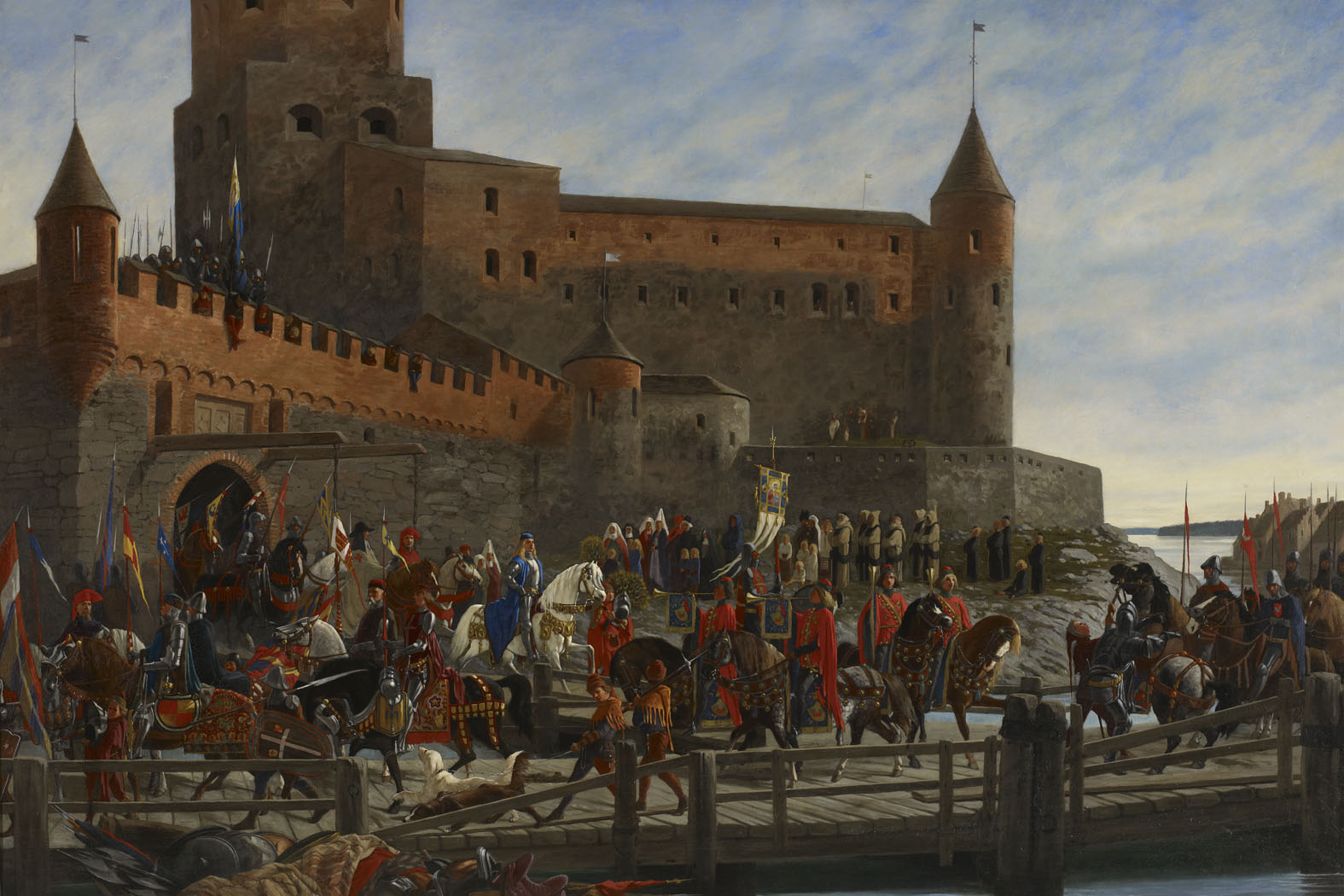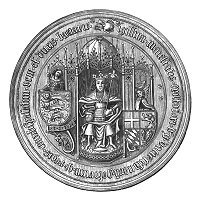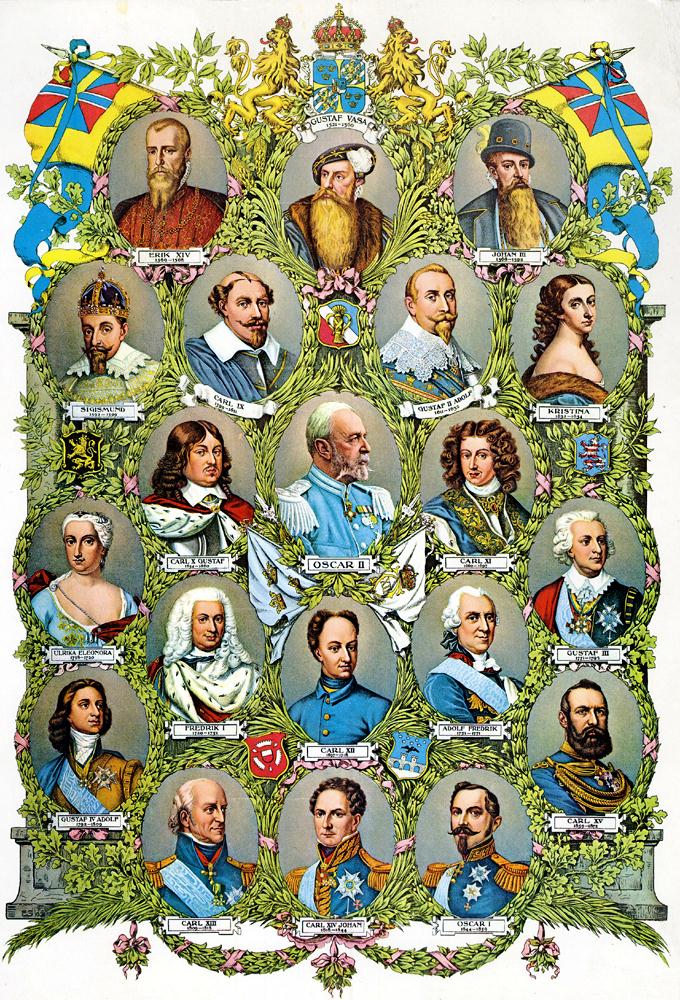|
1448
Year 1448 ( MCDXLVIII) was a leap year starting on Monday (link will display the full calendar) of the Julian calendar. Events January–December * January 6 – Christopher of Bavaria, King of Denmark, Norway and Sweden, dies with no designated heir, leaving all three kingdoms with vacant thrones. Brothers Bengt Jönsson Oxenstierna and Nils Jönsson Oxenstierna are selected to serve as co-regents of Sweden. * August 14 – Battle of Oronichea: Albania is victorious over Venice. * June 20 – The Regency period of Sweden ends with the election of Karl Knutsson Bonde, as King Charles VIII of Sweden. * June 28 – Charles VIII of Sweden is publicly hailed as king at Mora Stones, and is crowned in Uppsala Cathedral the following day. * September 28 – Christian of Oldenburg, betrothed to Queen Dowager Dorothea of Brandenburg, becomes King Christian I of Denmark. * October 4 – Peace between Albania and Venice is established. * October 17 &n ... [...More Info...] [...Related Items...] OR: [Wikipedia] [Google] [Baidu] |
Battle Of Kosovo (1448)
The Second Battle of Kosovo ( Hungarian: ''második rigómezei csata'', Turkish: ''İkinci Kosova Muharebesi'') (17–20 October 1448) was a land battle between a Hungarian-led Crusader army and the Ottoman Empire at Kosovo Polje. It was the culmination of a Hungarian offensive to avenge the defeat at Varna four years earlier. In the three-day battle the Ottoman army under the command of Sultan Murad II defeated the Crusader army of regent John Hunyadi. After that battle, the path was clear for the Turks to conquer Serbia and the other Balkan States, it also ended any hopes of saving Constantinople. The Hungarian kingdom no longer had the military and financial resources to mount an offensive against the Ottomans. With the end of the half-century-long Crusader threat to their European frontier, Murad's son Mehmed II was free to lay siege to Constantinople in 1453. Background In 1444, the Hungarian king, Władysław III of Poland, in breach of a ten-year truce that ex ... [...More Info...] [...Related Items...] OR: [Wikipedia] [Google] [Baidu] |
Charles VIII Of Sweden
Charles VIII ( sv, Karl; 1408–1470), contemporaneously known as Charles II and called Charles I in Norwegian context, was king of Sweden (1448–1457, 1464–1465 and 1467–1470) and king of Norway (1449–1450). Regnal name Charles was the second Swedish king by the name of Charles (Karl). ''Charles VIII'' is a posthumous invention, counting backwards from Charles IX (r. 1604–1611) who adopted his numeral according to a fictitious history of Sweden. Six others before Charles VII are unknown to any sources before Johannes Magnus's 16th century book ', and are considered his invention. Charles was the first Swedish monarch of the name to actually use a regnal number as ''Charles II'' (later retrospectively renumbered VIII), on his wife's tombstone (1451) at Vadstena. Early life Karl Knutsson was born in October 1408 or 1409, at Ekholmen Castle, the son of Knut Tordsson (Bonde), knight and member of the privy council (''riksråd''), and Margareta Karlsdotter (Sparre av To ... [...More Info...] [...Related Items...] OR: [Wikipedia] [Google] [Baidu] |
Christopher Of Bavaria
Christopher of Bavaria (26 February 1416 – 5/6 January 1448) was King of Denmark (1440–48, as Christopher III), Sweden (1441–48) and Norway (1442–48) during the era of the Kalmar Union. Biography Coming to power He was the son of John, Count Palatine of Neumarkt (1383–1443) and Catherine of Pomerania (c. 1390–1426). Catherine was the daughter of Wartislaw VII, Duke of Pomerania in Pomerania-Stolp, and sister of the Scandinavian king, Eric of Pomerania. Count Palatine John was a son of King Rupert of Germany (1352–1410). Christopher was probably born at Neumarkt in der Oberpfalz in Upper Palatinate, in Bavaria, Germany. In 1445, Christopher married Dorothea of Brandenburg (1430 – 25 November 1495) in Copenhagen. Eric of Pomerania was deposed as king of Denmark and Sweden in 1439. Eric's nephew, Christopher, who was rather unfamiliar with Scandinavian conditions, was elected by the Danish State Council as the successor to his uncle, first as regent from 1439, ... [...More Info...] [...Related Items...] OR: [Wikipedia] [Google] [Baidu] |
Battle Of Oranik (1448)
The First Battle of Oranik took place during the Albanian-Venetian War of 1447-1448, when the Republic of Venice allied with the Ottoman Empire against the League of Lezhë. The Albanian forces defeated the Ottoman army led by Mustafa Pasha during the battle and two months later peace was established between Albania and Venice. Background In 1447, Skanderbeg had gone to war with Venice. The Venetians had been using diplomatic tactics to weaken Skanderbeg's influence and power: they had been trying to convince the Ottomans to launch an incursion into Albania. The Ottomans, who had been besieging Svetigrad, could not peel away their forces to fight in the Albanian interior: Svetigrad blocked their way and Skanderbeg's army was camped nearby. Once the fortress had fallen, however, they could afford to send troops into Albania. Prelude and the battle Mustafa, after gathering his army, invaded Albania through upper Dibra Dibra is an Albanian surname. Notable people with the surnam ... [...More Info...] [...Related Items...] OR: [Wikipedia] [Google] [Baidu] |
Dorothea Of Brandenburg
Dorothea of Brandenburg (1430/1431 – 10 November 1495) was a Hohenzollern princess who became a Scandinavian queen by marriage under the Kalmar Union. She was Queen of Denmark, Norway, and Sweden from her marriage to King Christopher III in 1445 until Christopher died in 1448. As the wife of King Christian I, Dorothea was Queen of Denmark from their marriage in 1449 and Queen of Norway from 1450 until Christian's death in 1481. She was also Queen of Sweden during Christian's reign in that kingdom from 1457 to 1464. She served as interim regent during the interregnum in 1448, and as regent in the absence of her second spouse during his reign.Dorotea urn:sbl:17601, '''' (art ... [...More Info...] [...Related Items...] OR: [Wikipedia] [Google] [Baidu] |
John Hunyadi
John Hunyadi (, , , ; 1406 – 11 August 1456) was a leading Hungarian military and political figure in Central and Southeastern Europe during the 15th century. According to most contemporary sources, he was the member of a noble family of Wallachian ancestry. He mastered his military skills on the southern borderlands of the Kingdom of Hungary that were exposed to Ottoman attacks. Appointed voivode of Transylvania and head of a number of southern counties, he assumed responsibility for the defense of the frontiers in 1441. Hunyadi adopted the Hussite method of using wagons for military purposes. He employed professional soldiers, but also mobilized local peasantry against invaders. These innovations contributed to his earliest successes against the Ottoman troops who were plundering the southern marches in the early 1440s. Although defeated in the battle of Varna in 1444 and in the second battle of Kosovo in 1448, his successful "Long Campaign" across the Balkan Mountains ... [...More Info...] [...Related Items...] OR: [Wikipedia] [Google] [Baidu] |
Christian I Of Denmark
Christian I (February 1426 – 21 May 1481) was a Scandinavian monarch under the Kalmar Union. He was king of Denmark (1448–1481), Norway (1450–1481) and Sweden (1457–1464). From 1460 to 1481, he was also duke of Schleswig (within Denmark) and count (after 1474, duke) of Holstein (within the Holy Roman Empire). He was the first king of the House of Oldenburg. In the power vacuum that arose following the death of King Christopher of Bavaria (1416–1448) without a direct heir, Sweden elected Charles VIII of Sweden (14081470) king with the intent to reestablish the union under a Swedish king. Charles was elected king of Norway in the following year. However the counts of Holstein made the Danish Privy Council appoint Christian as king of Denmark. His subsequent accessions to the thrones of Norway (in 1450) and Sweden (in 1457), restored the unity of the Kalmar Union for a short period. In 1463, Sweden broke away from the union and Christian's attempt at a reconquest res ... [...More Info...] [...Related Items...] OR: [Wikipedia] [Google] [Baidu] |
List Of Swedish Monarchs
This is a list of Swedish kings, queens, regents and viceroys of the Kalmar Union. History The earliest record of what is generally considered to be a Swedish king appears in Tacitus' work '' Germania'', c. 100 AD (the king of the Suiones). However, due to scant and unreliable sources before the 11th century, lists of succession traditionally start in the 10th century with king Olof Skötkonung, and his father Eric the Victorious, who also were the first Swedish kings to be baptized. There are, however, lists of Swedish pagan monarchs with far older dates, but in many cases these kings appear in sources of disputed historical reliability. These records notably deal with the legendary House of Yngling, and based on the Danish chronicler Saxo Grammaticus, Eric the Victorious and Olof Skötkonung have often been classified as belonging to the Swedish house of Ynglings, tracing them back to Sigurd Hring and Ragnar Lodbrok (whom Saxo considered to belong to the House of Yngling). Ho ... [...More Info...] [...Related Items...] OR: [Wikipedia] [Google] [Baidu] |
Jonah Metropolitan Of Moscow
Saint Jonah or Saint Jonas (''Иона'' in Russian) (died 1461), was the Metropolitan of Kiev and All Rus' from 1448 to his death in 1461. Like his immediate predecessors, he permanently resided in Moscow, and was the last Moscow-based primate of the Russian Church to keep the traditional title with reference to Kiev. He was also the first Metropolitan in Moscow to be appointed without the approval of the Ecumenical Patriarch of Constantinople as had been the norm. Biography Since the late 1420s, Jonah had been living in the Simonov Monastery in Moscow and was close to Metropolitan Photius, who make him Bishop of Ryazan and Murom. After Photius's death in 1431, Grand Prince Vasili II nominated Jonas for the post of Metropolitan, but the Uniate Patriarch Joseph II chose Isidore to become the Metropolitan of Kiev and All Rus'. After Isidore had been condemned and deposed by Vasily II and his bishops in Moscow in 1441, for his attempts to implement the decision on the Union of ... [...More Info...] [...Related Items...] OR: [Wikipedia] [Google] [Baidu] |
October 17
Events Pre-1600 * 690 – Empress Wu Zetian establishes the Zhou Dynasty of China. *1091 – London tornado of 1091: A tornado thought to be of strength T8/F4 strikes the heart of London. *1346 – The English capture King David II of Scotland at Neville's Cross and imprison him for eleven years. *1448 – An Ottoman army defeats a Hungarian army at the Second Battle of Kosovo. * 1456 – The University of Greifswald is established as the second oldest university in northern Europe. *1534 – Anti-Catholic posters appear in Paris and other cities supporting Huldrych Zwingli's position on the Mass. * 1558 – Poczta Polska, the Polish postal service, is founded. 1601–1900 *1604 – Kepler's Supernova is observed in the constellation of Ophiuchus. *1610 – French king Louis XIII is crowned in Reims Cathedral. *1660 – The nine regicides who signed the death warrant of Charles I of England are hanged, drawn and quartered. * 1662 & ... [...More Info...] [...Related Items...] OR: [Wikipedia] [Google] [Baidu] |
Venetian Albania
Venetian Albania ( vec, Albania vèneta, it, Albania Veneta, Serbian and Montenegrin: Млетачка Албанија / ''Mletačka Albanija'', ) was the official term for several possessions of the Republic of Venice in the southeastern Adriatic, encompassing coastal territories primarily in present-day southern Montenegro and partially in northern Albania. Several major territorial changes occurred during the Venetian rule in those regions, starting from 1392, and lasting until 1797. By the end of the 15th century, the main possessions in northern Albania had been lost to the expansion of the Ottoman Empire. In spite of that, Venetians did not want to renounce their formal claims to the Albanian coast, and the term ''Venetian Albania'' was officially kept in use, designating the remaining Venetian possessions in coastal Montenegro, centred around the Bay of Kotor. During this period the Albanian Piracy was flourishing. Those regions remained under Venetian rule until the fa ... [...More Info...] [...Related Items...] OR: [Wikipedia] [Google] [Baidu] |
Metropolitan Of Kiev And All Rus
The Metropolis of Kiev and all Rus' (russian: Митрополит Киевский и всея Руси, Mitropolit Kiyevskiy i vseya Rusi; ) was a metropolis of the Eastern Orthodox Church that was erected on the territory of Kievan Rus'. It existed between 988 AD and 1596 AD and later between 1620 AD and 1686 AD. Canonically, it was under the jurisdiction of the Ecumenical Patriarchate of Constantinople. The episcopal seat ('' cathedra'') was located in the city of Kiev. History of Kievan Rus' to the Mongol invasions Christianization of Kievan Rus' The history of the Orthodox Church in the region of Kievan Rus' is usually traced to the Baptism of Rus' at Kiev. While the date of this event is commonly given as 988, the evidence is contested. In that year, Grand Prince of Kiev — Vladimir the Great — together his people, were baptised in the river Dniper by clergy of the Ecumenical Patriarch of Constantinople. There is a legendary account that the first bishop might ha ... [...More Info...] [...Related Items...] OR: [Wikipedia] [Google] [Baidu] |






